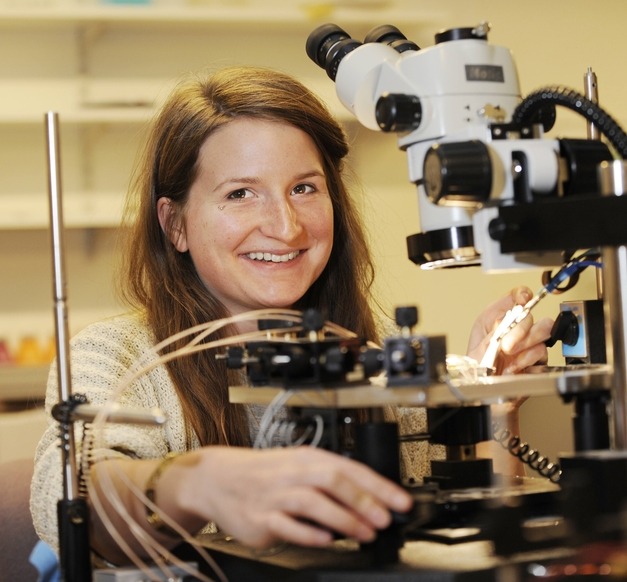“We’ve designed unusually small infrared nano-sensors which perform just as well as their larger counterparts,” says Pauline Renoux, Ph.D. student in physics. “Infrared sensors are used everywhere, from the daily life to industrial processes. Our sensors are easy to produce and don’t need any cooling systems.”
Renoux started working on infrared emitters in Iceland already in 2008 as an intern while working on her Master’s degree in France, and returned for her Ph.D. in 2009. “The emitters we researched during my internship proved to be efficient, so we began wondering if they could be used as sensors as well,” she says.
Renoux currently works with infrared sensors which are made of very thin platinum films, around 50 nanometers thick, which qualifies them in the nanotechnology category. “The purpose of my Ph.D. project is to describe and improve the sensor performance. I do the experiments in the cleanroom in the basement in VR3 where samples are made, and in our lab where I measure their properties.”
Currently, the field of nano-sciences represents the cutting-edge of technology. At this small scale, the laws of physics as we know it behave totally differently. As a result there is much enthusiasm and excitement in the scientific community and Renoux is very excited to be part of it. “So far our research helped us understand the physical mechanisms behind the exceptional sensing ability of our devices. We also improved the performance of the sensors by changing their design,” says Renoux.
Supervisor: Dr. Snorri Þorgeir Ingvarsson professor at the Science Institute, University of Iceland.



